European kitchens are having a moment – here's how to master the look for a timeless, homey cook space
Designers share the kitchen trends having a moment in Europe and reveal how to invite them into your space for an eclectic, lived-in look

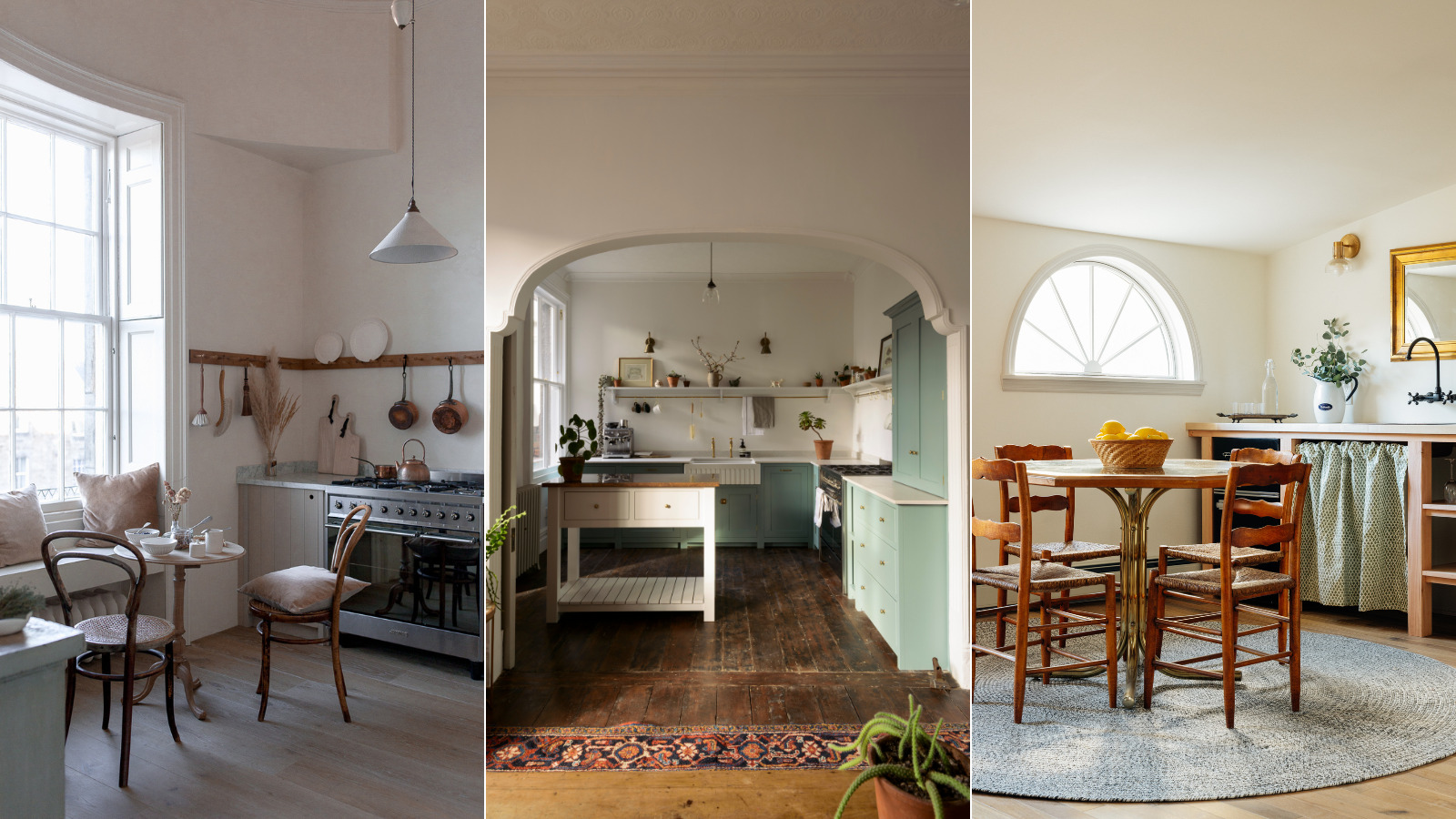
Inviting some European style into your kitchen is a great way to create a more characterful and charming space that feels warm and welcoming. European kitchen design trends blend both traditional and modern elements, helping to create a beautiful, lived-in look that still feels contemporary and practical.
We always receive a big dose of interiors inspiration when traveling, and you may already be dreaming of terrazzo worktops and terracotta tiles, or perhaps you're thinking of adding cafe curtains and bistro chairs for a hint of European flavor.
Below, interior designers and kitchen experts reveal the biggest European kitchen trends they are seeing right now, so you can cherry-pick the most suitable elements for your space when brainstorming your kitchen ideas – from color and material choices to smaller decorative elements.
European kitchen design trends
'Pulling design inspiration from global aesthetics you love is one of the best jumping-off points to design a home you love,' says interior designer Kathy Kuo. 'If you love the warm and cozy – yet still sophisticated and luxurious – look of French country kitchens, there are plenty of traditional details you can bring into your decor.'

Kathy Kuo is a celebrated interior designer and international guru within the home and lifestyle space. She has 20+ years of experience in the design industry.
What is European kitchen design?
'In my mind, European kitchen style is an emphasis on beautifully crafted, timeless, natural materials. It is quality over quantity, and embracing color and texture rather than an all-white box,' says Leah Harmatz, San Francisco-based interior designer at Field Theory Design. 'There is less adherence to "rules" – a dining table could sub in for a kitchen island, or a sink could be set into a wood island with a cafe curtain, rather than cabinetry. It's more eclectic and feels like an extension of the living space in the home rather than a separate utilitarian kitchen.'
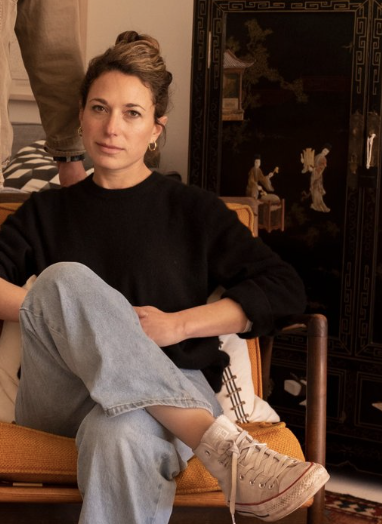
Leah Harmatz founded Field Theory in 2015, guided by the belief that beautiful, functional design has a direct impact on our daily lives. The design firm aims to add character and warmth to residential and commercial spaces with eclectic, layered designs and a point of view that activates all the senses.
1. Arches and curved edges
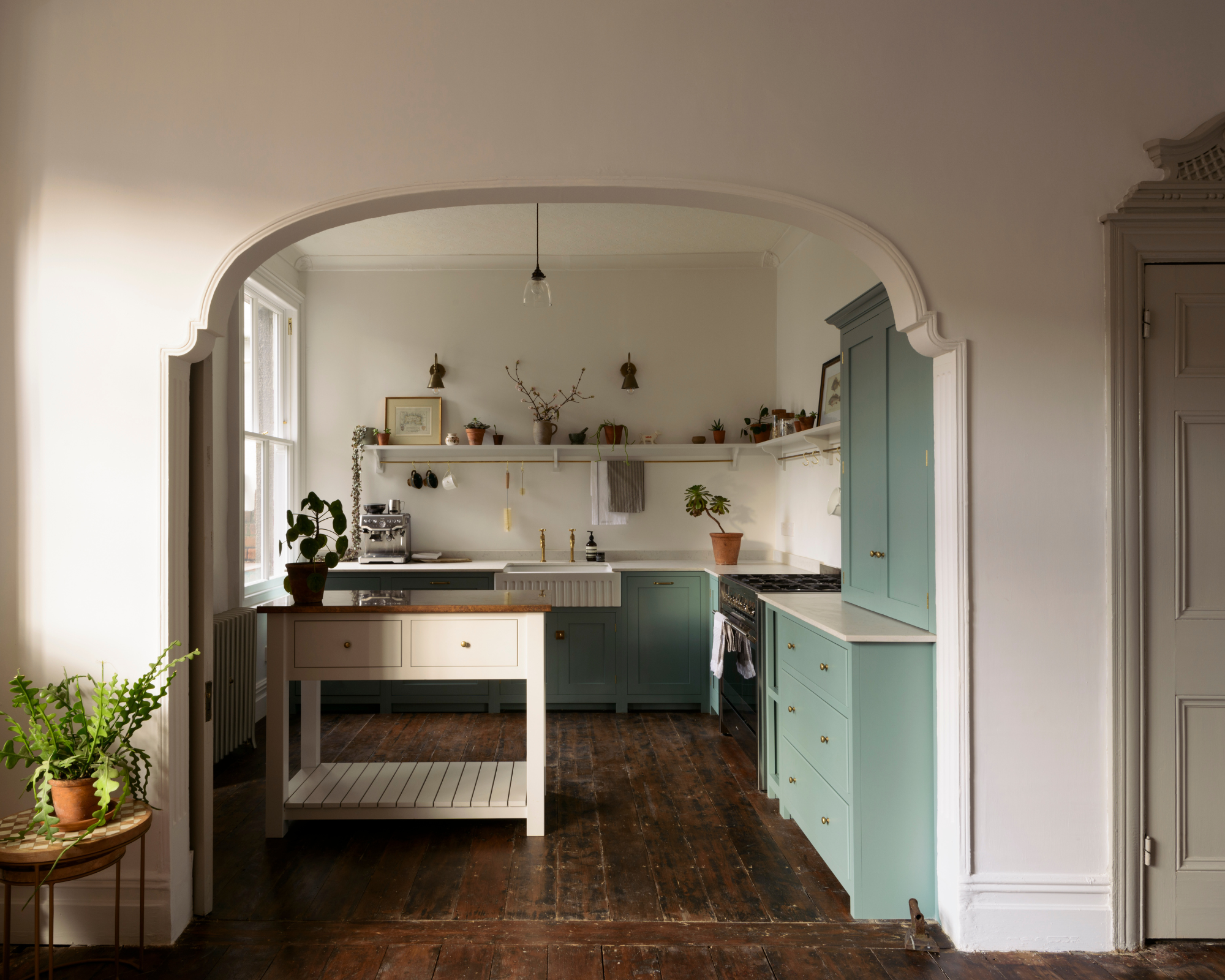
Kitchen by deVOL
Archways are synonymous with European design, bringing to mind historical Italian porticoes and creating an organic, nature-inspired aesthetic. They are a brilliant way to invite a more traditional, country kitchen style while offsetting the many harsh edges and angles of standard kitchen layouts and cabinetry, as shown above in this kitchen by deVOL.
'When I think of a European aesthetic, I instantly think of arches,' agrees April Dandy, principal designer at Alluring Designs Chicago. 'Arches in doorways, custom range hoods, and cabinetry are additions that also add tons of character and uniqueness to a kitchen.'
Design expertise in your inbox – from inspiring decorating ideas and beautiful celebrity homes to practical gardening advice and shopping round-ups.
April also loves the idea of adding curved elements in general: 'When elements in a kitchen are rounded, it gives such a fun and unique look and it can be as simple as adding rounded cabinetry to the end of an island.'

April Gandy is the principal designer at Alluring Designs Chicago, a full-service luxury interior design firm offering design services for residential and commercial interiors primarily in the Chicagoland area.
2. A limited color palette
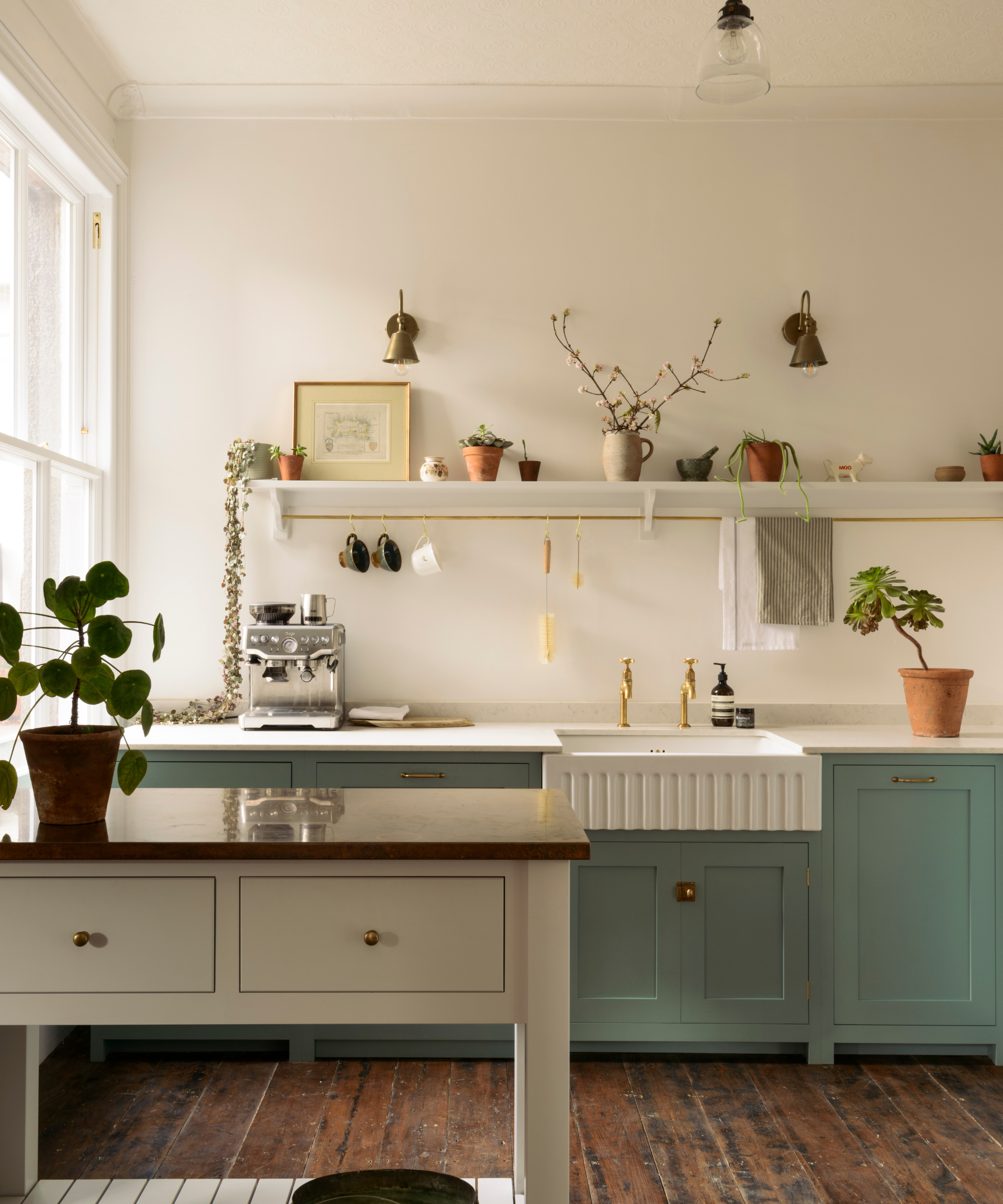
Kitchen by deVOL
Designers agree that a fairly pared-back kitchen color palette is the way to go when creating a European-style kitchen. This doesn't mean ruling out color altogether but using a few carefully selected colors that complement each other for an understated look that never dates. 'As a Scandinavian brand, we enjoy timeless colors, and we believe that colors should harmonize rather than dominate,' says Maria Tschertou Schäder, CEO at Scandinavian kitchen design firm Superfront.
For instance, you could try a 60/30/10 ratio of creamy neutrals, soft greens, and terracotta. Whatever your choice, the key is to stick to your color palette rather than introducing lots of different tones and finishes: 'To infuse European style into a kitchen, opt for a limited palette of materials, such as oak, stainless steel, and off-white, and adhere to it consistently,' says Fiona Ginnett, director and co-founder at HØLTE.
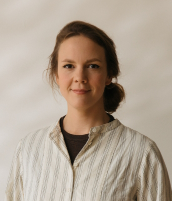
Fiona is the director and co-founder at London-based kitchen design studio HØLTE. Fiona has a deep appreciation of craftsmanship and a dedication to pursuing and promoting accessible sustainability in kitchen and furniture design.
3. Warm wood tones
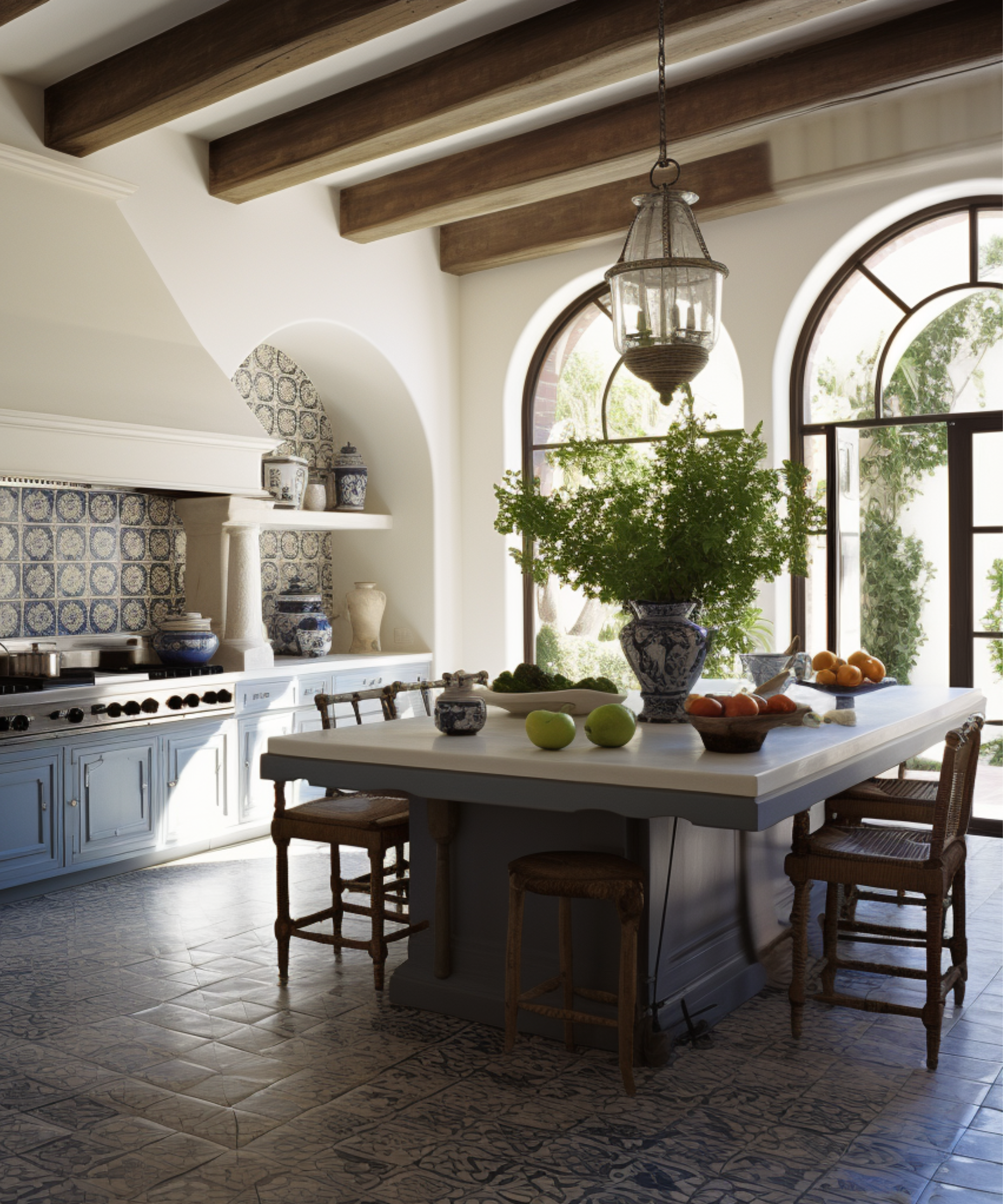
Warm wood tones are often found in countryside homes in Europe, for example, you'll see natural wood kitchen cabinetry, dining tables and islands. Interior designer Kati Curtis says materials like distressed wood and wrought iron are often utilized together, complemented by a warm and inviting color palette that emphasizes earth tones, neutrals, and pastels.
In order to infuse some European style into a recent kitchen project, Kati made an architectural enhancement to the space by adding reclaimed oak beams to a high ceiling, drawing the eye up and creating a sense of height.
Darker wood tones will also work, so don't be afraid of going a little darker: 'We love the look of natural wood cabinets, and for a European feel, we've been leaning into darker woods such as walnut and cherry, or oak with a deeper chestnut brown finish,' says designer Leah Harmatz.
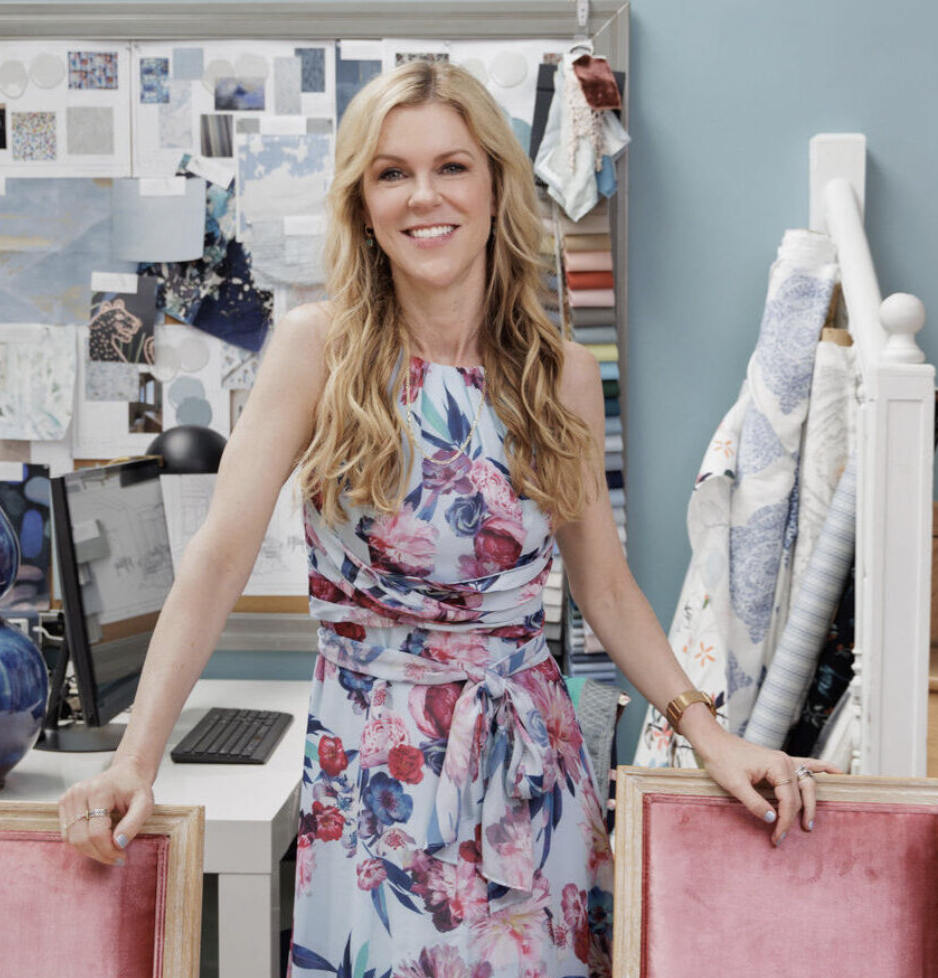
Kati Curtis is the founder of Kati Curtis Design, an design firm based in New York City specializing in classic design with a global influence. Kati founded the studio in 2005 after 12 years of working with international architecture and engineering firms.
4. Delft tiles
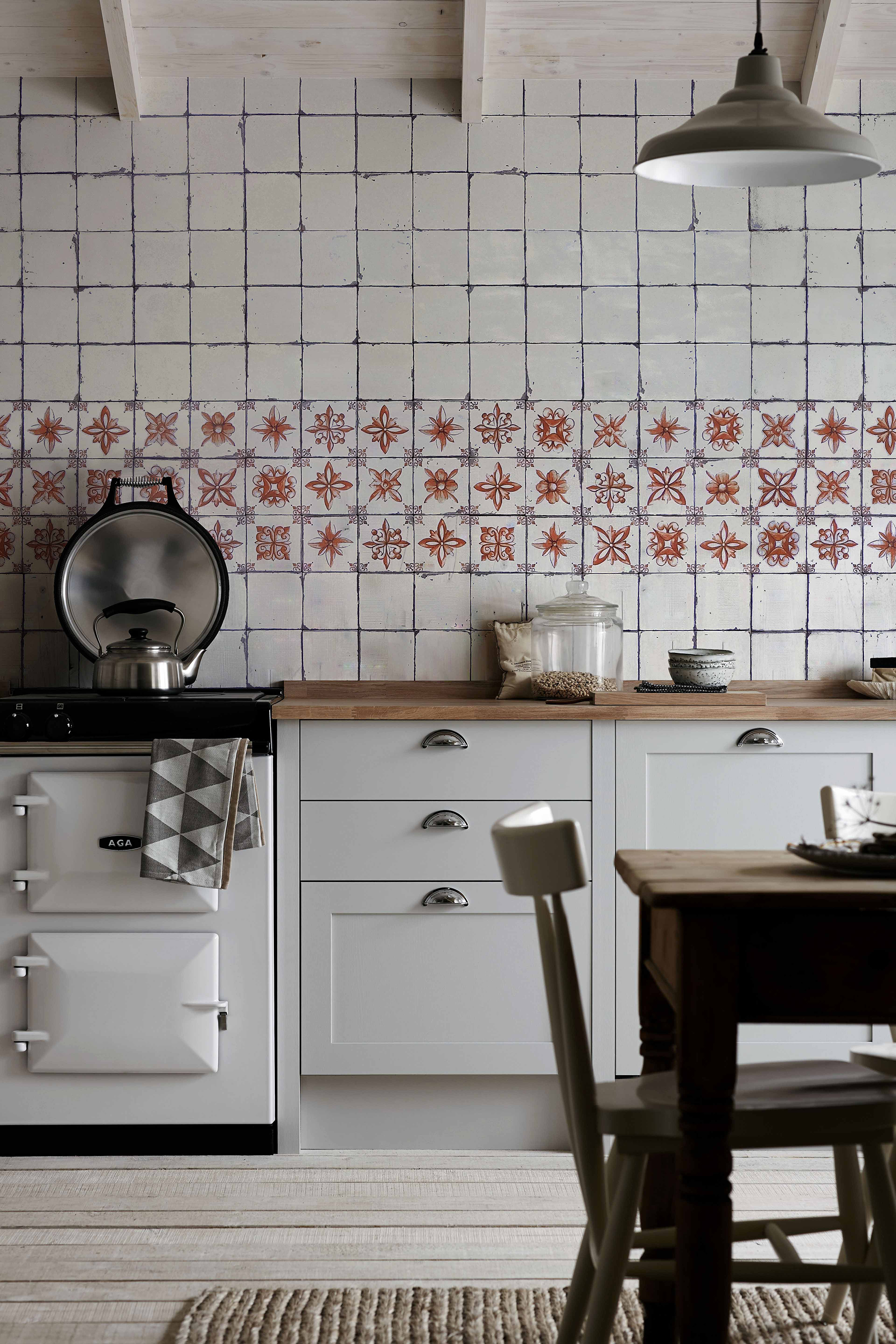
'Delft tile is having a moment,' says designer Leah Harmatz. These are hand-painted tiles, traditionally in whites and blues, that often depict flowers and wildlife. These distinctive tiles from the city of Delft in the Netherlands are a simple and effective way to reference European design, creating a soft and ornate look, without feeling kitsch.
Leah points out that you don't have to go all the way and cover the whole kitchen backsplash, but just stagger them through a more neutral kitchen tile: 'we recommend ordering a small batch of antique tiles to scatter throughout the backsplash or installing a mix of newly crafted delft and solid tiles that are inspired by the originals.'
5. Nods to French style
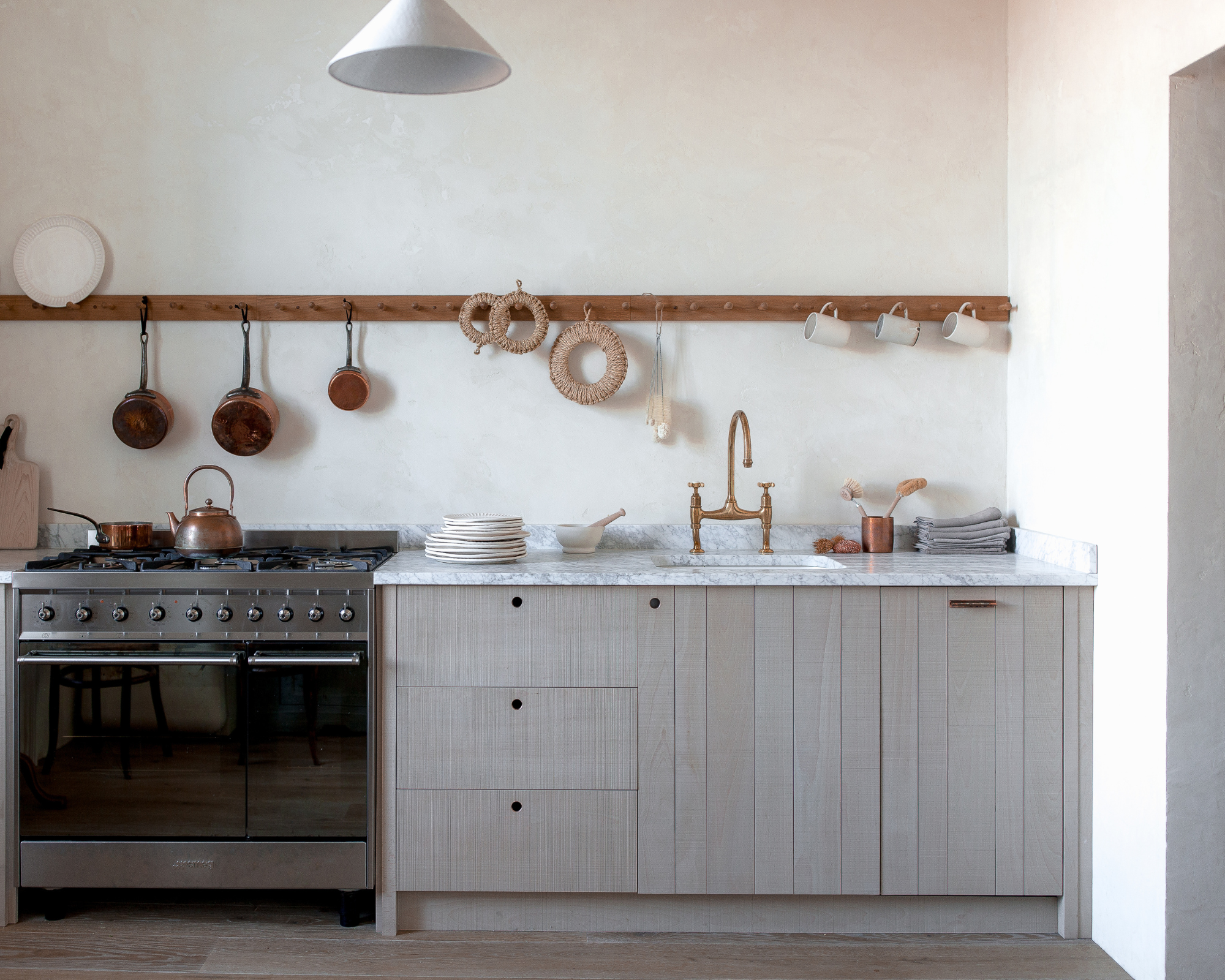
Kitchen by deVOL
Interior designer Kathy Kuo points out that plenty of smaller, budget kitchen updates can elevate your kitchen with a subtle French aesthetic. 'Cafe curtains, bistro chairs, and checkerboard tiles instantly evoke chic Parisian cafe society, whereas Delft tiles, old world wall art, and stoneware dishes will feel more Provencal and French country,' Kathy explains.
'Regardless of the aesthetic you choose, try to work with the space you have to maximize its full potential in a practical way. For example, it's easier to bring in a new set of bistro chairs for your kitchen island than it is to retile your entire floor in custom French tilework.'
6. Stone
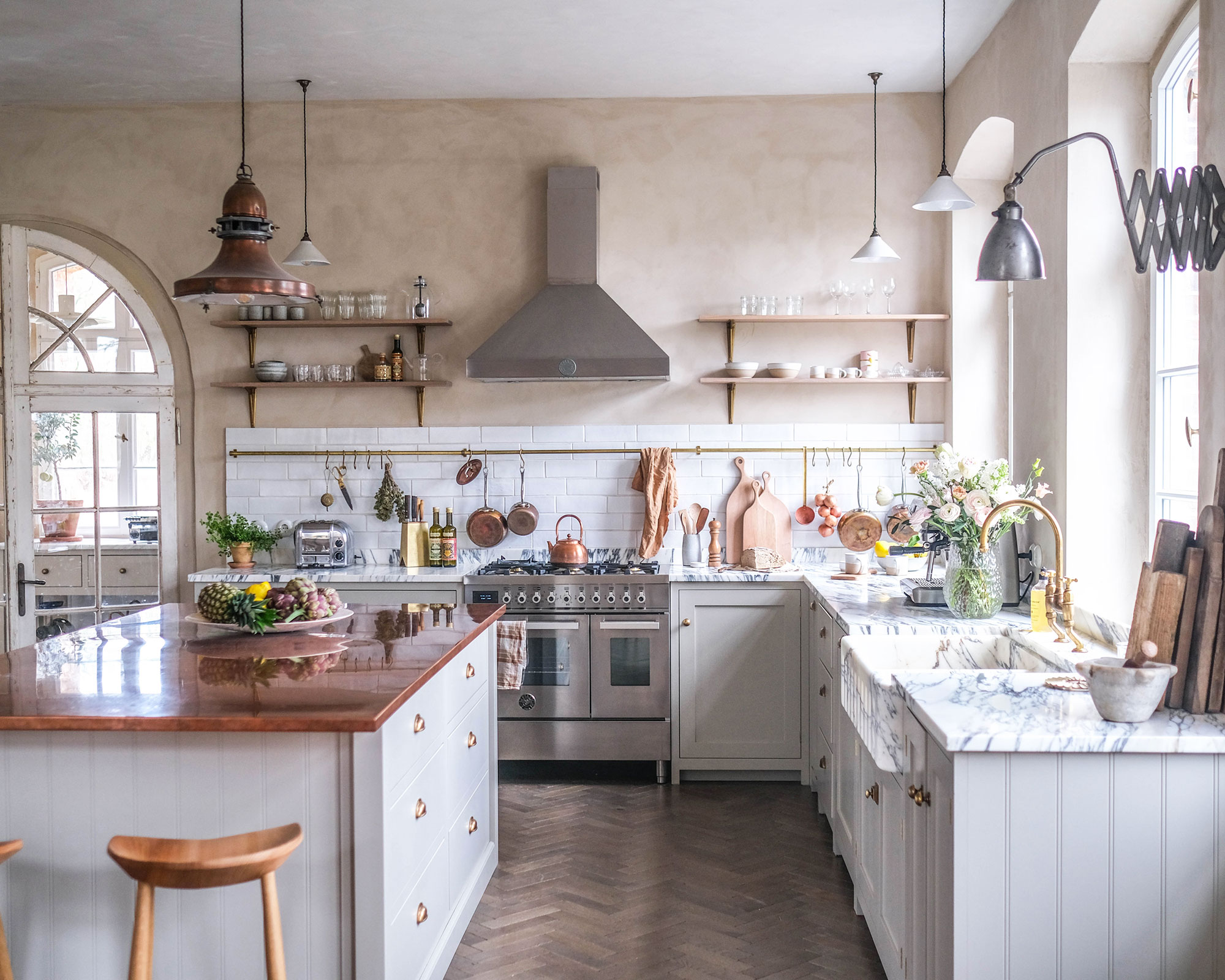
The materials you use on kitchen countertops have a big impact on the overall style of the space. 'Prioritize stone! Older European kitchens don’t tend to get redesigned as frequently as you might think, so many of them have durable elements like stone in much of the room,' says interior designer Breegan Jane.
'Those older design trends feature stone countertops, floors and beautiful raw stone walls. Take a note from the 1800s-1900s and modernize the styles for a fresh take that feels like an ode to those regal spaces.'

Breegan Jane is a TV host, designer, entrepreneur and philanthropist in Los Angeles. Breegan’s signature style meshes the artistic and elegant with livable comfort. She achieves a stunning, modern aesthetic with decor that maximizes elegance and fosters simplicity, serenity, and supreme comfort.
FAQs
What are the kitchen trends in Europe for 2024?
Fiona Ginnett, director and co-founder at HØLTE kitchen company says the key trends in Europe this year are:
'A shift towards larger, chunkier, and more statement physical handles.
'The embrace of "unfitted" styles, featuring kitchens with legs instead of plinth panels to the floor, creating a more open and contemporary aesthetic.
'A preference for combinations of earthy tones for both cabinets and worktops, with popular choices including terracotta, orange, and oak, reflecting a grounded and nature-inspired design approach.'
What makes a house European style?
'Typically, a house feels European-style when there is an attention to detail and old-world craftsmanship, natural materials such as wood, stone, or forged metals that will patina over time, an embrace of muted color, and an efficient use of space,' Leah Harmatz adds.
A European element can also be introduced through lighting – interior designer Leah Harmatz says, 'we love adding vintage French or Italian pendants and sconces with a midcentury or postmodern style.
'We'll also source newly made, handcrafted fixtures that reference those styles, with elements such as fluted glass, chrome, brass, or painted metal shades.'

Millie is a freelance writer and qualified interior designer based in Sheffield. She has many years of experience in the world of content and marketing, and previously worked as the head of Solved at Homes & Gardens. Before that, she worked in SEO at News UK in London and New York. She has a first-class degree in French and Italian from UCL and loves to weave decor into her home that reminds her of time spent living and studying in Bologna. Millie believes a clutter-free space that you love coming home every day is the best secret weapon for our well-being.
